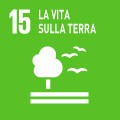- Docente: Valentina Alena Girelli
- Crediti formativi: 12
- SSD: ICAR/06
- Lingua di insegnamento: Inglese
- Moduli: Valentina Alena Girelli (Modulo 1) Alessandro Lambertini (Modulo 2)
- Modalità didattica: Convenzionale - Lezioni in presenza (Modulo 1) Convenzionale - Lezioni in presenza (Modulo 2)
- Campus: Ravenna
- Corso: Laurea in Building Construction Engineering (cod. 5897)
-
Orario delle lezioni (Modulo 1)
dal 17/02/2025 al 10/06/2025
-
Orario delle lezioni (Modulo 2)
dal 26/02/2025 al 11/06/2025
Conoscenze e abilità da conseguire
Through this course the student learns the basic elements of Geomatics: Geodesy, modern surveying techniques, numerical cartography and Geographic Information Systems. At the end of the class, the student has acquired the skills in collecting, visualizing, managing and analyzing geospatial data relating to objects, buildings, infrastructures, cities, land. He/she is able to use topographic and satellite instruments and to project and manage 3D surveys by laser scanners and photogrammetric techniques. Furthermore, the student is able to handle cartographic representations and to use GIS software tools for the management and processing of georeferenced databases.
Contenuti
Module 1 (6 CFU; VALENTINA ALENA GIRELLI)
Theoretical bases of cartography: the general problem of cartographic projection; types of projections; classification of maps; deformations in a cartographic map; the concept of scale and error in a map; Gauss conformal projection and correspondence formulas; Italian cartography; The UTM-UPS system.
Introduction to laser scanner: classification of laser systems; the LIDAR system; the mobile laser scanner; fields of application of laser systems.
Introduction to photogrammetry: historical information and the transition from analogue to digital photogrammetry; the central projection and the equations of collinearity; the design of an aerial and terrestrial photogrammetric survey; examples of final products obtainable by photogrammetry. The photogrammetric process: classical phases; distortions in a frame; the internal orientation with the correction of the image coordinates. The external orientation of a photogrammetric block; precision in the photogrammetric restitution in the normal case. Structure-from-Motion approach.
Digital photogrammetry. Digital images: radiometric and geometric resolution. Methods for Stereoscopic Digital Vision. The Image Matching. The digital orthophoto. Errors in a frame. Photoplans and Orthophotos. Resampling of a digital image.
Numerical cartography: methods for the production of numerical cartography; restitution and vectorization; vector files and raster files: formats and characteristics; georeferencing a digital image.
The Geographic Information Systems.
Module 2 (6 CFU; ALESSANDRO LAMBERTINI)
Reference systems of the classical and satellite Geodesy; coordinate systems; coordinate transformations in the plane and in space; transformations between reference systems.
Surveying elementary schemes; survey methods using GNSS (Global Navigation Satellite System) receivers.
Modern topographical instrumentations and surveying methods with total stations e digital levels.
Statistical analysis of topographical measurements; the propagation of measurement errors; principles of least squares; least squares adjustment of measurements using the indirect observations method. Analysis of results and precision.
Testi/Bibliografia
- Slides and notes from the lectures, scientific literature provided in digital format
- C. D. Ghilani, P. R. Wolf: "Elementary Surveying: An Introduction to Geomatics", Pearson, 2015
- Shan J, Toth C.K.: "Topographic Laser Ranging and Scanning: Principles and Processing", CRC Press, 2018
- Burrough P.A., McDonnell R.A., LLoyd C.D.: "Principles of Geographical Information Systems", Oxford University Press, 2015
- Konecny G.: "Geoinformation: Remote Sensing, Photogrammetry and Geographic Information Systems", 2nd ed., CRC Press, 2014
Metodi didattici
Lectures and exercises in the Laboratory or on your own PC, also using open-source software.
Discussion of real case studies.
In consideration of the type of activity and the adopted teaching methods, the attendance of this course requires the prior participation of all students in the Modules 1 and 2 on safety and health in the study places, in e-learning mode.
See https://elearning-sicurezza.unibo.it/?lang=en
Modalità di verifica e valutazione dell'apprendimento
The final exam is unique for the entire course and verifies the acquisition of the expected knowledge and skills by carrying out a written test, without the help of notes or books.
At the time of the test, students must have an identification document (Identity Card or Driving License or Passport) and a badge and show it to the examiners.
The writing consists of various types of questions (multiple choice, true-false, short open questions or basic exercises) that cover the entire program of the course. Each question is associated, and declared immediately before the exam, with a score whose total amount exceeds the maximum of 2 units (32/30). Incorrect answers do not result in score penalty. The test must be performed within the indicated time range and generally not exceeding one hour.
Strumenti a supporto della didattica
A significant part of the course is designed to practical activities on the field and in the laboratory, by means of commercial, scientific and open source programs.
Orario di ricevimento
Consulta il sito web di Valentina Alena Girelli
Consulta il sito web di Alessandro Lambertini
SDGs



L'insegnamento contribuisce al perseguimento degli Obiettivi di Sviluppo Sostenibile dell'Agenda 2030 dell'ONU.
